Russell’s viper venom has been a cornerstone in hematology and coagulation research for decades. When properly diluted, this powerful venom transforms from a deadly toxin into an invaluable diagnostic tool and research resource. This article explores how dilute Russell viper venom works, its critical applications in medicine, and why it continues to be essential in both clinical and research settings worldwide.
Índice
AlternarProperties of Russell's Viper Venom
Russell’s viper (Daboia russelii), the source of RVV used in medical testing
Russell’s viper (Daboia russelii) is a highly venomous snake native to the Indian subcontinent. Named after Scottish herpetologist Patrick Russell, this snake produces a complex venom that contains numerous bioactive compounds. The venom’s composition makes it particularly valuable for medical applications.
Key Components of Russell's Viper Venom
The venom contains several enzymes and proteins that affect blood coagulation, including:
- RVV-X: A glycoprotein that directly activates Factor X in the coagulation cascade
- RVV-V: An enzyme that activates Factor V
- Phospholipases: Enzymes that affect cell membranes
- Proteases: Proteins that break down other proteins
- Neurotoxins: Components affecting nerve function
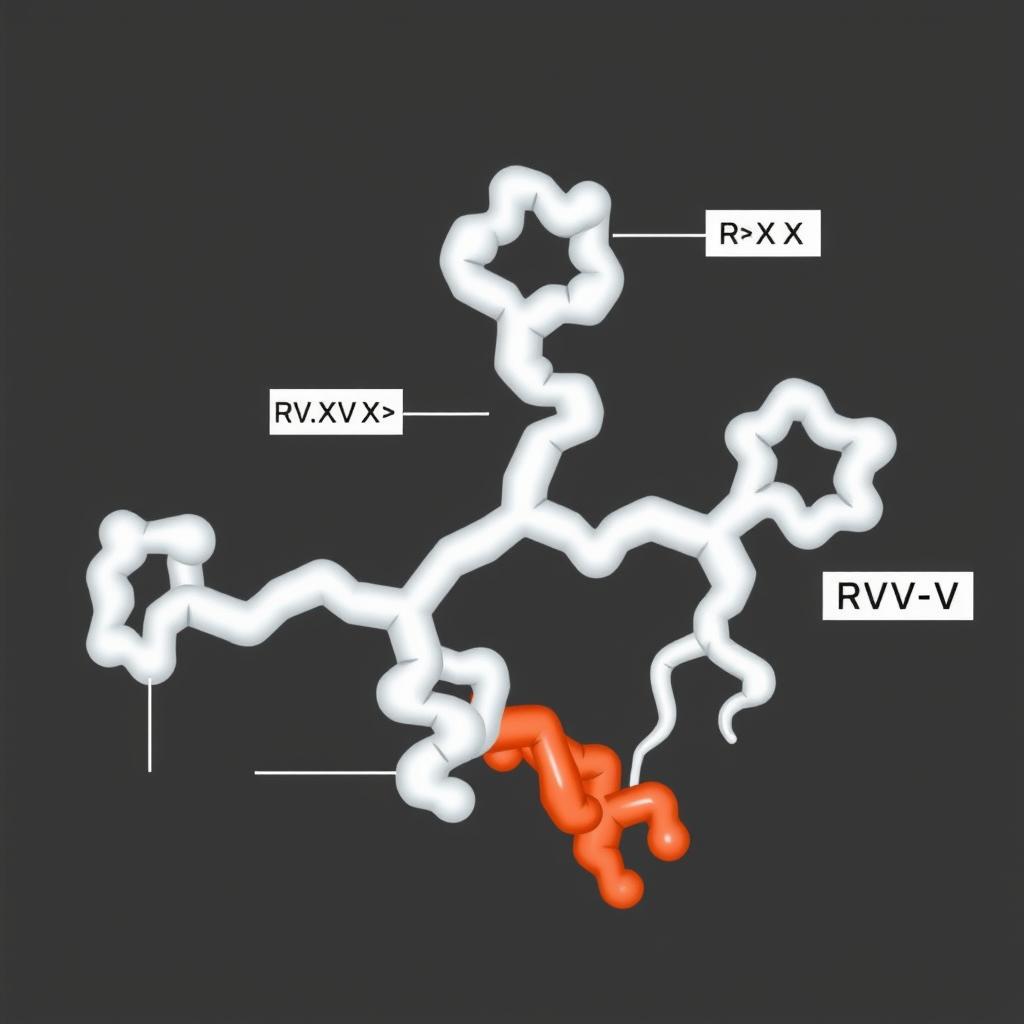
The most medically significant component is RVV-X, which directly activates Factor X in the blood coagulation pathway. This property allows dilute Russell viper venom to bypass the intrinsic and extrinsic coagulation pathways, making it invaluable for specific diagnostic tests.
The Dilution Process and Its Importance

Transforming raw Russell’s viper venom into a safe, standardized laboratory reagent requires precise dilution techniques. This process is critical for reducing toxicity while preserving the specific enzymatic activities needed for diagnostic applications.
Standard Dilution Protocol
The dilution process typically involves several steps to ensure consistency and safety:
- Extraction of crude venom from Russell’s vipers under controlled conditions
- Lyophilization (freeze-drying) of the venom to create a stable powder
- Reconstitution in appropriate buffer solutions
- Serial dilution to achieve the desired concentration
- Quality control testing to ensure consistent activity
For the dilute Russell viper venom time (dRVVT) test, the venom is typically diluted to give a clotting time of 30-35 seconds when testing normal plasma. This specific dilution optimizes sensitivity to antiphospholipid antibodies while maintaining reproducibility across different laboratories.
“The dilution of Russell’s viper venom is not merely about reducing concentration—it’s about calibrating its activity to achieve precise diagnostic sensitivity while eliminating toxicity risks.”
— Journal of Thrombosis and Haemostasis
Proper dilution transforms the venom from a deadly toxin to a precise diagnostic tool, highlighting how natural compounds can be harnessed for medical applications when properly processed.
Medical Applications of Dilute Russell Viper Venom

Lupus Anticoagulant Detection
The primary clinical application of dilute Russell viper venom is in the dilute Russell viper venom time (dRVVT) test, which has become the gold standard for detecting lupus anticoagulant (LA). This test is crucial for diagnosing antiphospholipid syndrome, a condition that increases the risk of blood clots and pregnancy complications.
How the dRVVT Test Works
The test follows a three-phase protocol:
- Screening phase: Patient plasma is mixed with dilute RVV and phospholipid. A prolonged clotting time suggests the presence of lupus anticoagulant.
- Mixing study: Patient plasma is mixed with normal plasma to differentiate between factor deficiencies and inhibitors.
- Confirmation phase: Additional phospholipid is added, which should correct the clotting time if lupus anticoagulant is present.
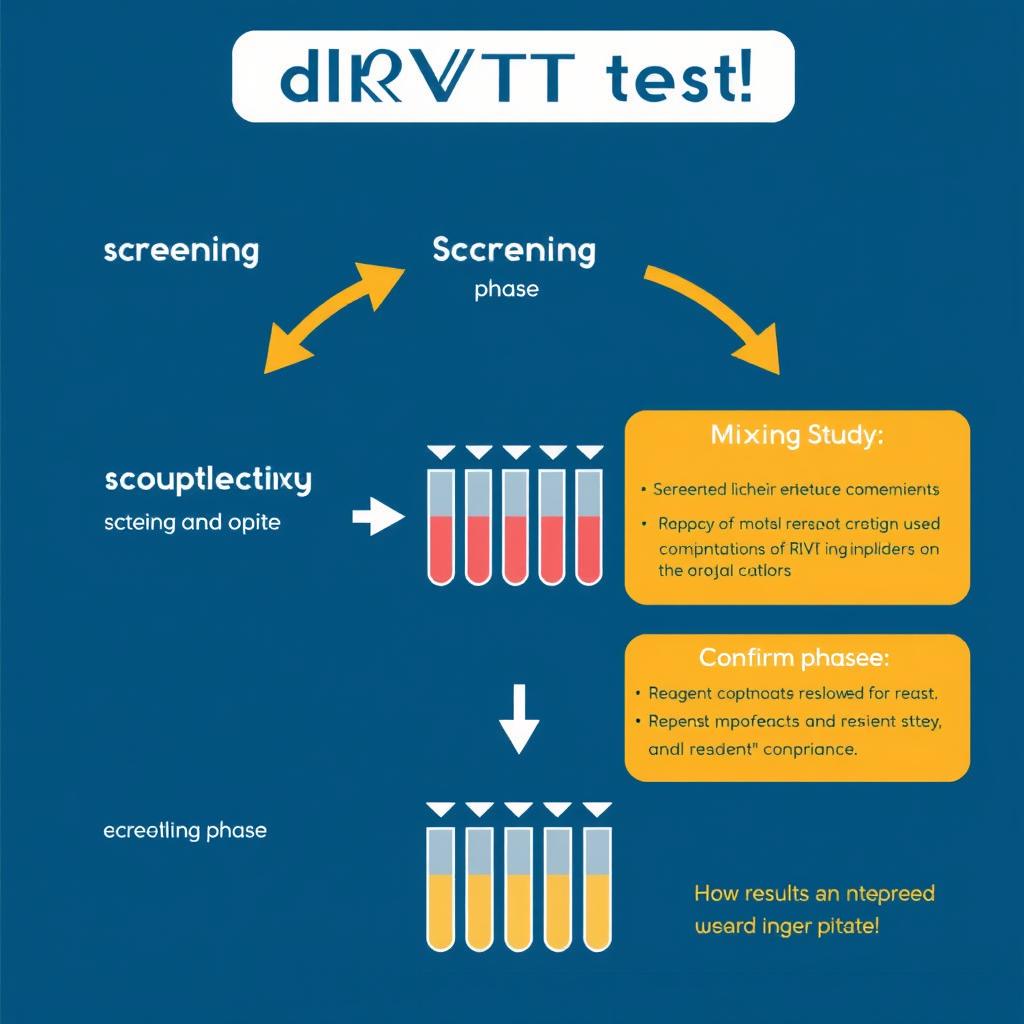
Other Clinical Applications
- Factor X Assays: Dilute Russell viper venom can be used to directly measure Factor X activity in plasma
- Monitoring Anticoagulant Therapy: The test can help assess the effects of certain anticoagulant medications
- Coagulation Research: Used to study specific pathways in the coagulation cascade
- Antivenom Production: The venom is used to produce antivenom for treating Russell’s viper bites
| Test Name | Primary Use | Target Condition | Interpretation |
| dRVVT Screen | Initial detection of LA | Antiphospholipid syndrome | Prolonged time suggests LA presence |
| dRVVT Confirm | Confirmation of LA | Antiphospholipid syndrome | Correction with phospholipid confirms LA |
| RVV Factor X Assay | Factor X activity measurement | Factor X deficiency | Reduced activity indicates deficiency |
Research Applications in Pharmacology and Neurology

Beyond its diagnostic applications, dilute Russell viper venom has become an important tool in various research fields, particularly pharmacology and neurology. Scientists continue to discover new potential applications by studying the venom’s unique properties.
Pharmacological Research
Researchers are investigating several promising applications:
- Drug Development: Venom components are being studied as templates for new anticoagulant and antithrombotic medications
- Cancer Research: Certain venom proteins show potential for targeting cancer cells
- Cardiovascular Studies: The venom’s effects on blood vessels and platelets provide insights for cardiovascular medicine
- Pain Management: Some components may have applications in developing novel analgesics
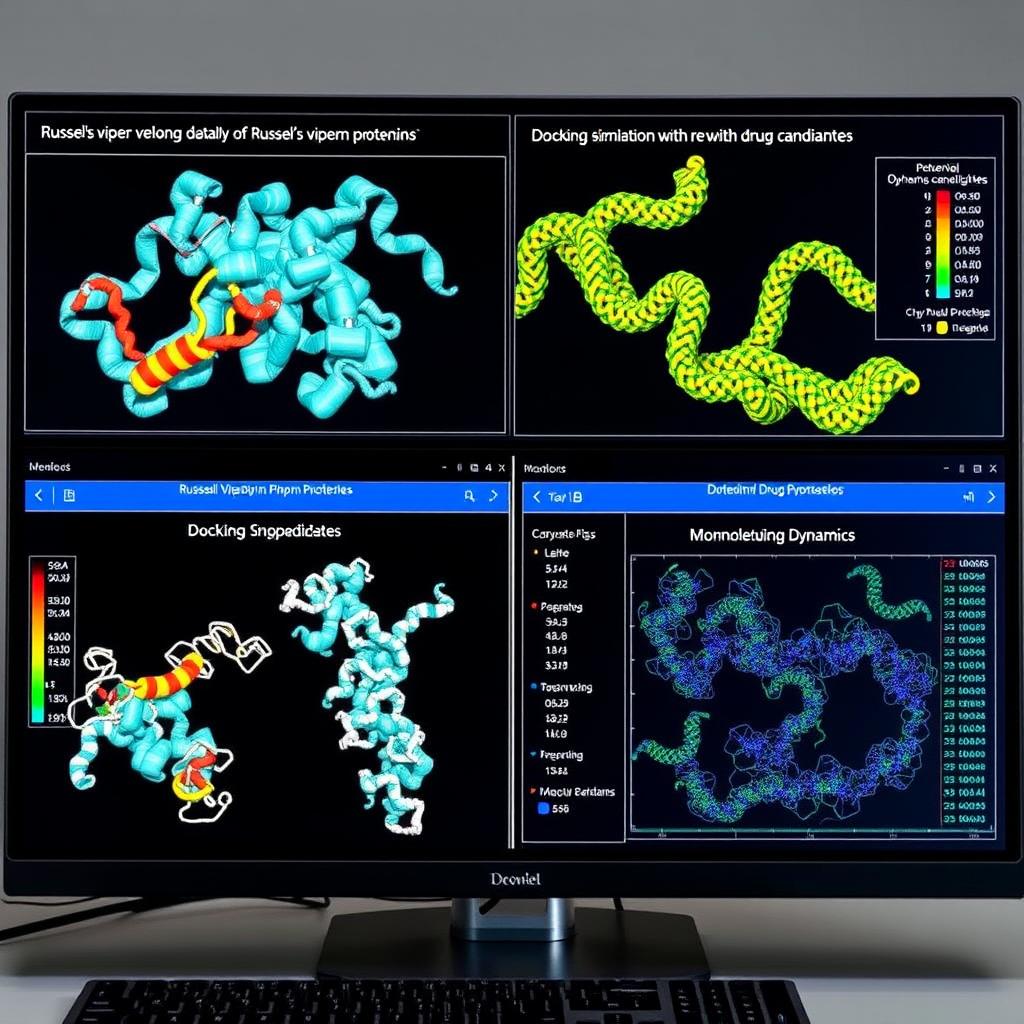
Neurological Applications
The neurotoxic components of Russell’s viper venom are providing valuable insights into neurological processes:
- Neurotransmission Studies: Venom components that affect nerve signals help researchers understand neural communication
- Neurodegenerative Disease Research: Studying how certain venom proteins interact with neural tissues may provide insights into conditions like Alzheimer’s and Parkinson’s
- Neuroprotective Agents: Some venom components show potential for protecting nerve cells from damage

These research applications demonstrate how a substance that evolved as a predatory weapon in nature can be repurposed to advance medical science and potentially develop new treatments for various conditions.
Safety Protocols for Handling Diluted Venom
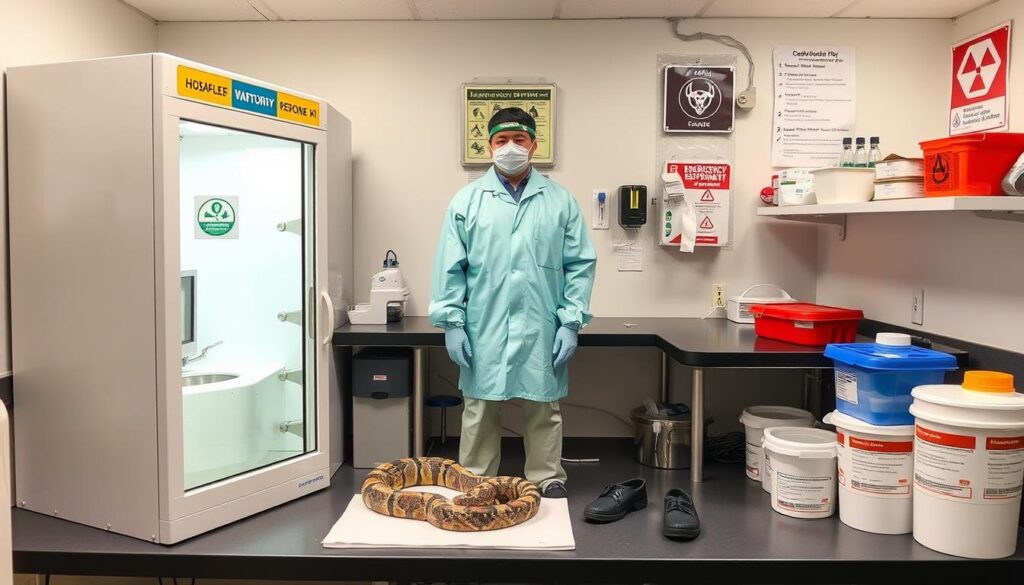
Despite dilution, Russell’s viper venom requires strict safety protocols. Even in diluted form, the venom contains potent enzymes that demand careful handling to prevent accidental exposure and ensure accurate test results.
Essential Safety Measures
- Personal Protective Equipment (PPE): Laboratory coat, gloves, eye protection, and closed-toe shoes are mandatory
- Biosafety Cabinets: Preparation should occur in properly certified biosafety cabinets
- Spill Protocols: Specific procedures must be in place for managing accidental spills
- First Aid Measures: Emergency protocols for accidental exposure must be readily available
- Proper Storage: Venom must be stored according to manufacturer guidelines, typically refrigerated or frozen
- Waste Disposal: All materials contacting the venom require proper biohazard disposal
Training Requirements
Personnel working with dilute Russell viper venom should receive comprehensive training on:
- Proper handling techniques
- Understanding the biological hazards
- Emergency response procedures
- Documentation requirements
- Quality control measures
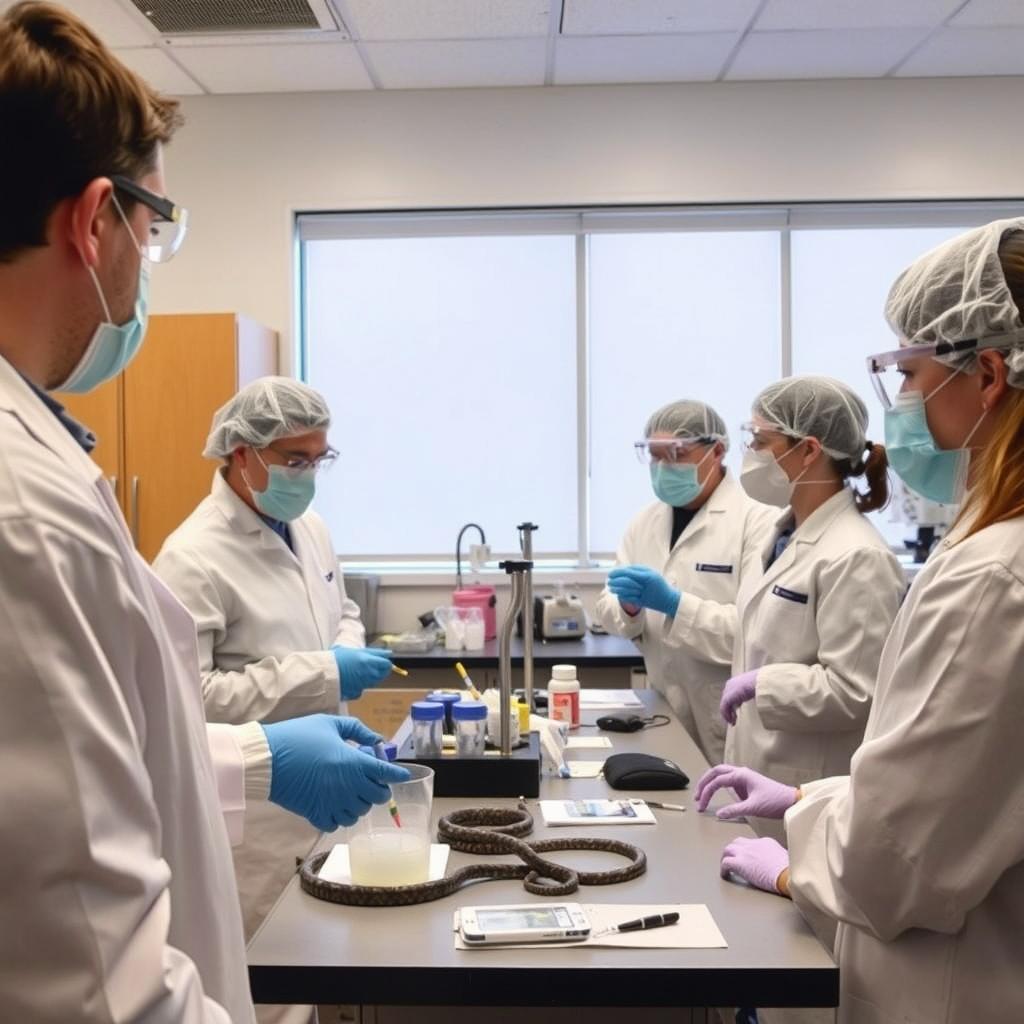
Many institutions require specialized certification before personnel can work with snake venoms, even in diluted form. Regular safety audits and refresher training help maintain a safe working environment.
Comparison with Other Snake Venoms in Clinical Use
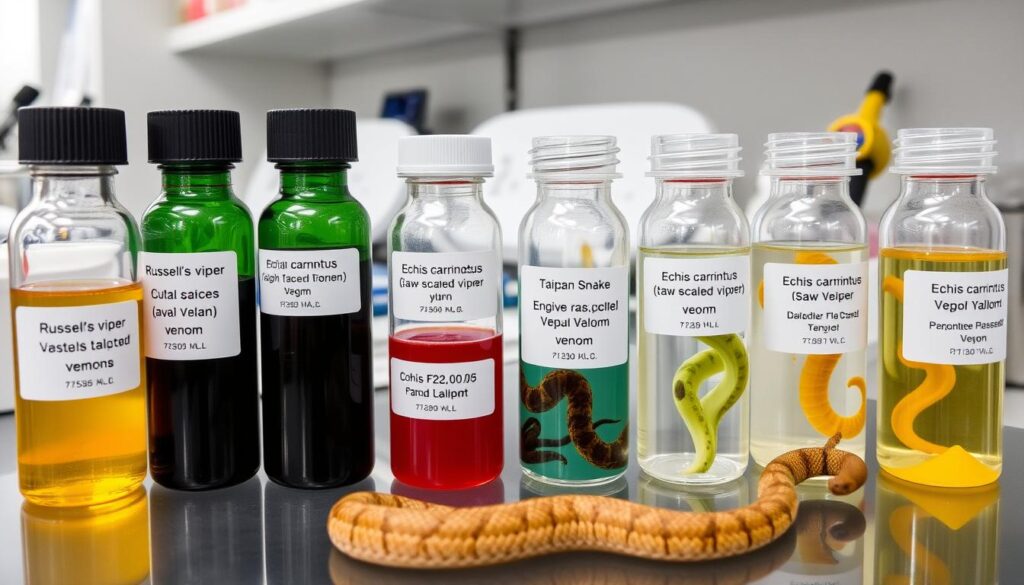
While dilute Russell viper venom is widely used in coagulation testing, several other snake venoms have important clinical applications. Each venom has unique properties that make it suitable for specific diagnostic or therapeutic purposes.
| Snake Species | Venom Components | Clinical Applications | Advantages | Limitations |
| Russell’s Viper (Daboia russelii) | RVV-X, RVV-V, phospholipases | dRVVT test, Factor X assays | Directly activates Factor X, bypassing intrinsic/extrinsic pathways | Affected by heparin, DOACs |
| Taipan (Oxyuranus scutellatus) | Taipoxin, prothrombin activators | Taipan venom time test | Less affected by heparin than dRVVT | Less standardized than dRVVT |
| Saw-scaled Viper (Echis carinatus) | Ecarin (prothrombin activator) | Ecarin clotting time | Monitors direct thrombin inhibitors | Limited to specific anticoagulant monitoring |
| Malayan Pit Viper (Calloselasma rhodostoma) | Ancrod (fibrinogenolytic enzyme) | Defibrinogenating agent | Specific fibrinogen depletion | Narrow therapeutic window |
Complementary Testing Approaches
In clinical practice, tests using different snake venoms are often used in combination to provide a more complete diagnostic picture:
- The dRVVT and Silica Clotting Time (SCT) are recommended as complementary tests for lupus anticoagulant detection
- Taipan/Ecarin ratio testing can be useful when heparin is present in the sample
- Textarin/Ecarin ratio provides another approach for detecting lupus anticoagulant
This comparative approach highlights how different snake venoms, each with unique biochemical properties, can be harnessed for specific diagnostic purposes in modern medicine.
Conclusion: The Continuing Importance of Dilute Russell Viper Venom
Dilute Russell viper venom represents a remarkable example of how a naturally occurring toxin can be transformed into an invaluable medical tool. From its critical role in diagnosing antiphospholipid syndrome to its expanding applications in research, this carefully processed venom continues to contribute significantly to healthcare and scientific advancement.
As laboratory techniques evolve and our understanding of venom components deepens, we can expect to see even more innovative applications emerge. The journey from deadly toxin to life-saving diagnostic tool demonstrates the ingenuity of medical science in harnessing nature’s complex biochemistry for human benefit.
Enhance Your Laboratory Knowledge
Download our comprehensive guide to coagulation testing protocols, including detailed procedures for dilute Russell viper venom time testing and interpretation.


